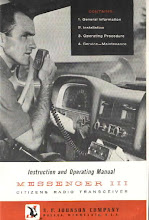Screened at the Ritzy in Brixton around December 06 or January 07
First there is a vague halo of green, then as the camera retreats from the screen it begins by touching,  or as if touching, two green squares rounded off by light which diffuses their boundaries, then, more, their geometrical arrangement becoming more evident and the contours which demarcate them becoming more defined. The camera continues its retreat until it is revealed that the object of its scrutiny which it has begun at its limit of being, at the very threshold beyond which it would not longer exist, is in fact a projection screen displaying a projected digital televisual image.
or as if touching, two green squares rounded off by light which diffuses their boundaries, then, more, their geometrical arrangement becoming more evident and the contours which demarcate them becoming more defined. The camera continues its retreat until it is revealed that the object of its scrutiny which it has begun at its limit of being, at the very threshold beyond which it would not longer exist, is in fact a projection screen displaying a projected digital televisual image.
What the camera has touched here is the absence of image, at the same time as it has touched a vestige, a remain, it has touched the pixel itself, the constituent and support of the image. It has shown that at its core there is only this smudged square lost in light, fixed in its place, immovable, static, dead. Nowhere else has the uncanniness of the digital image been rendered in cinema so chillingly as in the opening sequence of the film Zidane: A Twenty-first Century Portrait.
 or as if touching, two green squares rounded off by light which diffuses their boundaries, then, more, their geometrical arrangement becoming more evident and the contours which demarcate them becoming more defined. The camera continues its retreat until it is revealed that the object of its scrutiny which it has begun at its limit of being, at the very threshold beyond which it would not longer exist, is in fact a projection screen displaying a projected digital televisual image.
or as if touching, two green squares rounded off by light which diffuses their boundaries, then, more, their geometrical arrangement becoming more evident and the contours which demarcate them becoming more defined. The camera continues its retreat until it is revealed that the object of its scrutiny which it has begun at its limit of being, at the very threshold beyond which it would not longer exist, is in fact a projection screen displaying a projected digital televisual image.What the camera has touched here is the absence of image, at the same time as it has touched a vestige, a remain, it has touched the pixel itself, the constituent and support of the image. It has shown that at its core there is only this smudged square lost in light, fixed in its place, immovable, static, dead. Nowhere else has the uncanniness of the digital image been rendered in cinema so chillingly as in the opening sequence of the film Zidane: A Twenty-first Century Portrait.
The footage for the film was captured by means of multiple cameras. Some mobile, some fixed, one famously borrowed from NASA, others parasitically drawn on in order to capture events missed by the dedicated cameras.
They may be dedicated but they are not dedicated to the recording of the spectacle of the sport of football as defined by its grid, boundaries and goalposts. The film is concerned with the vectorial (MacKenzie Wark has presented a typology of the vector in Virilio’s thought).
What is especially interesting in the particular conjunction created by Gordon and Parreno is the bringing into cinematic presence (at least for a while before going to DVD) of the two faces identified by Brian Massumi of the regularatory and the regulatory. It is the television itself, he argues, in an analysis of sport – football specifically – in its conjunction with televised sport which serves to emphasise this distinction. A distinction which serves less to indicate and hold either side to its position, than to emphasise the transitivity of our epoch (he hesitates to call it postmodern). The homes in which televisions screen football matches are themselves passable membranes, leaky facades, monads connected at a low level of communication, transmitting at low resolution we might say (see Virilio), often in the dark. There may be no home in the film, but this may be the point; there is only the network, only the televisual (see Derrida’s terminology).
Of course one of the defining characteristics of modern football is the intensification of the circulation of capital...another conduct of time which is analysed by Eric Alliez in his study Tales for the Conquest of Time...I will have to leave that excursion for another occasion.
